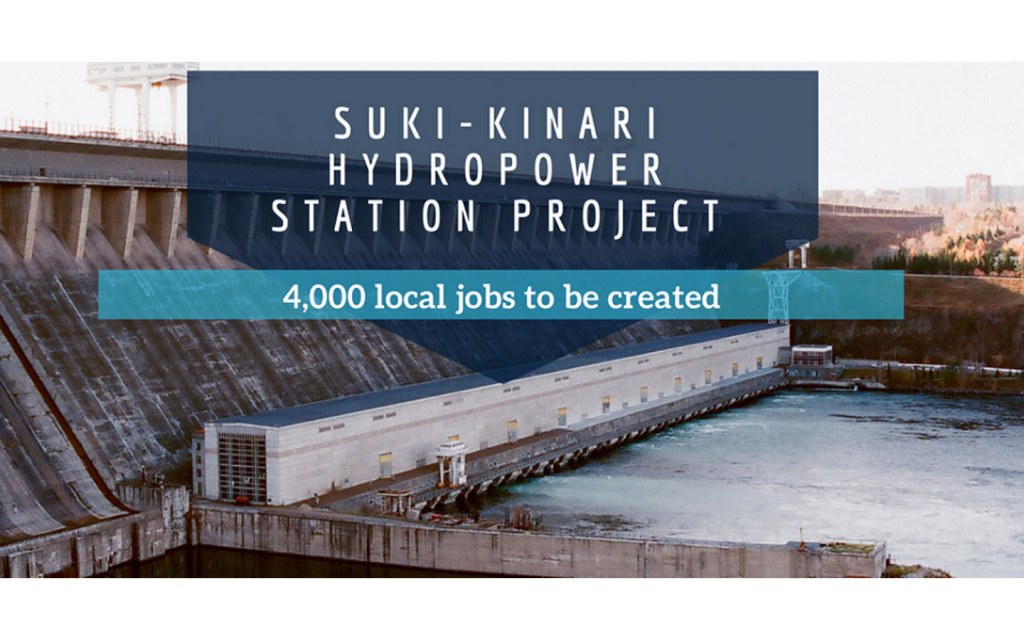The Suki Kinari hydropower project, as the name suggests, is an energy project being executed in Khyber Pakhtunkhwa as part of the China-Pakistan Economic Corridor (CPEC).
It is expected that the power project will add 870 MW to the national grid once it is completed in 2022. In this blog, we will cover various aspects of the Suki Kinari hydropower project and how it will address power shortages. This will also increase employment opportunities as it is said to provide 3000 jobs to the locals of the area by the year 2020 when it is expected to be officially launched. The project is being operated on the Build-Own-Operate-Transfer (BOOT) model, with a lease of 30 years with the China Gezhouba group.
Latest updates on Suki Kinari hydropower project
It is expected that the project will be completed before its deadline. The Suki Kinari hydropower project is based near the beautiful river of Kunhar in Khyber Pakhtunkhwa. The initial work regarding the power generation at the Kunhar River began in the 1960s, but there was little to no groundwork at the time. In 2016, the KP government signed an agreement with the SK Hydro Power Ltd and also with the Industrial and Commercial Bank of China (ICCBC) to construct a dam at the site.
The estimated cost of the Suki Kinari hydropower project is $1.9 billion. It will be developed on the Build-Operate-Transfer (BOT) model.
So, what is the BOT model? It basically means that the China Gezhouba Group Corporation (CGGC) would manage it for the next 30 years after then the project would be transferred to the KP government.
The water is drawn from River Kunhar, taken to the turbines in a powerhouse located downstream through a tunnel, and once the energy production is done, the water is again diverted back to the River Kunhar.
In a recent interview with Pakistan Today, the chairman of Suki Kinari Hydro Pvt Ltd. Mr. Zhang Shiyun said that “around 41.85pc construction work has been completed.” He was of the view that apart from the initial problems and hitches, the project is running on time and will hopefully be completed before its deadline. He mentioned that in some areas the project is ahead of schedule.
The dam for Suki Kinari hydroproject will be 54.5 meter high and around 336 meter wide having 2 gated spillways. It is expected that four 218 MW turbines will be installed in Suki Kinari project which will generate around 870 MW of electricity. A 3.1 km long reservoir with a capacity of 9 million cubic meters of water is also a part of the project.
Advantages of setting up Suki Kinari hydropower project

There are many advantages of CPEC’s energy project on the Kunhar river. Some of them are mentioned below:
- It is expected that the cost of electricity produced at Suki Kinari would include each unit to cost 8.8 cents.
- Around 4,000 labourers were employed at the project which would increase to 6,000 or maybe 10,000 as the project nears completion by 2022.
- The Suki Kinari hydropower project once completed will provide local residents with approximately 140 million cubic meters of drinking water per year
- The project has also benefited local businesses by helping increase the production of cement, reinforcements, aggregate, diesel and explosive etc.
- It will also reduce the chances of floods and help irrigate farmlands
- As a Corporate Social Responsibility Act, the Chinese company responsible for building Suki Kinari hydroproject has also constructed seven bridges on Kunhar River.
- These bridges would be handed over for community service once the project becomes operational
Apart from this, as a CSR activity, the Chinese staff visits various communities and school events every year and also cleans up parks, schools, and other community locations.
The same Chinese company responsible for working on Suki Kinari hydroproject had also taken up the stalled Neelum-Jhelum Power Project and completed it on the given time.
There were serious issues faced by the project and it could not materialize and was handed over to the Chinese company who is now working for Suki Kinari hydroproject. This is why it is expected that they will complete the task on time or even before it. Let’s see!
For more regular updates and informative posts on energy projects in Pakistan, especially related to CPEC, subscribe to Zameen Blog, the best real estate blog in Pakistan.
With the government’s decision to establish a CPEC Authority (CPECA) it is expected that the stalled projects of CPEC will now be completed on time. Do write to us about what you think of the project on blog@zameen.com. Waiting for your feedback!



